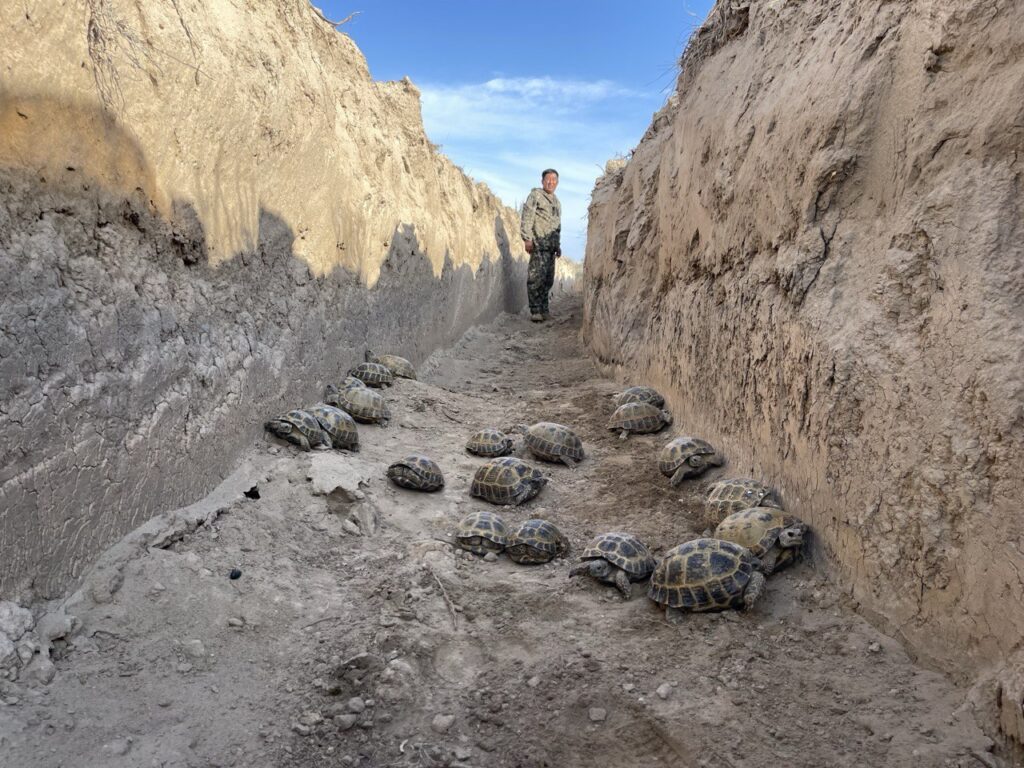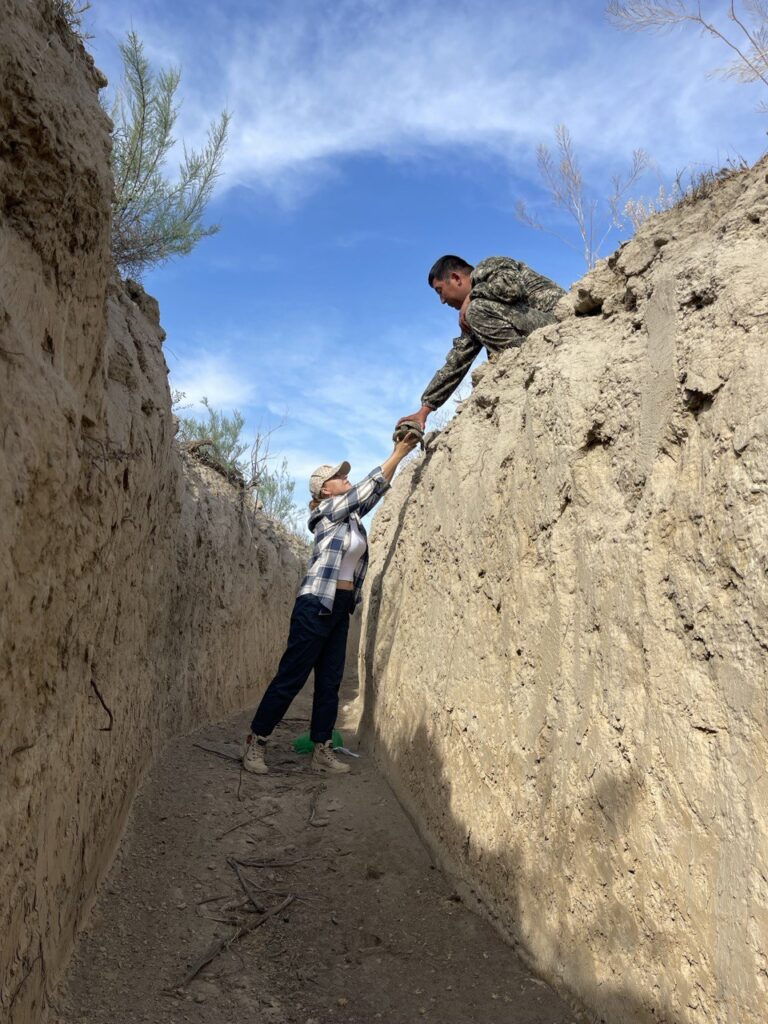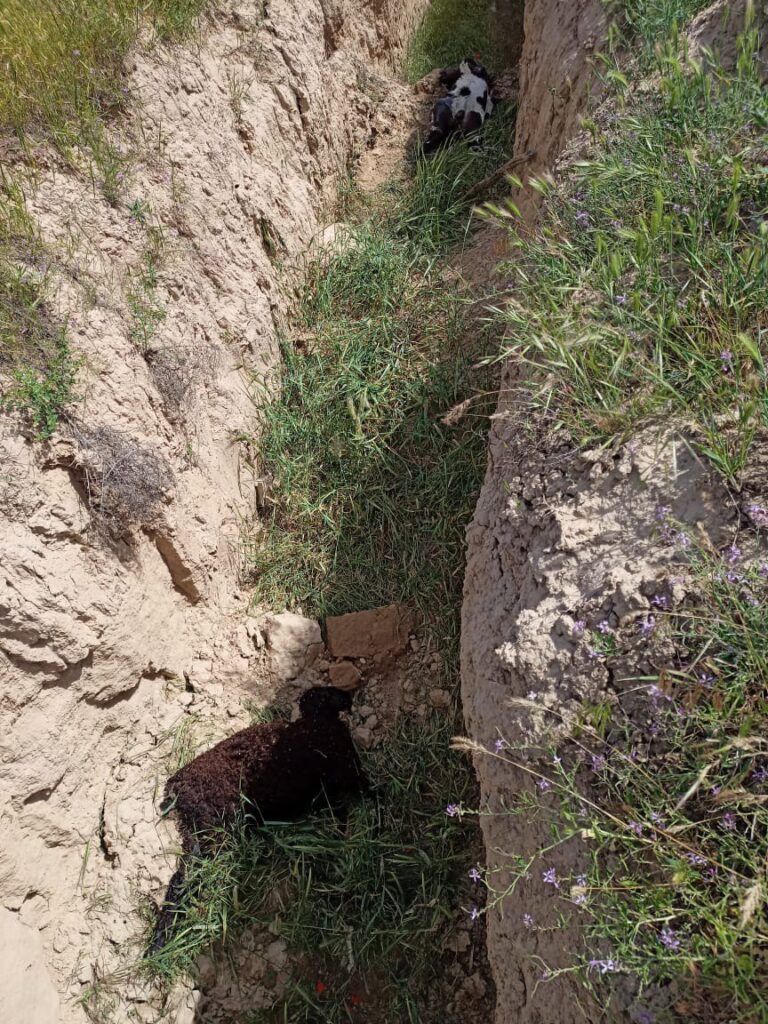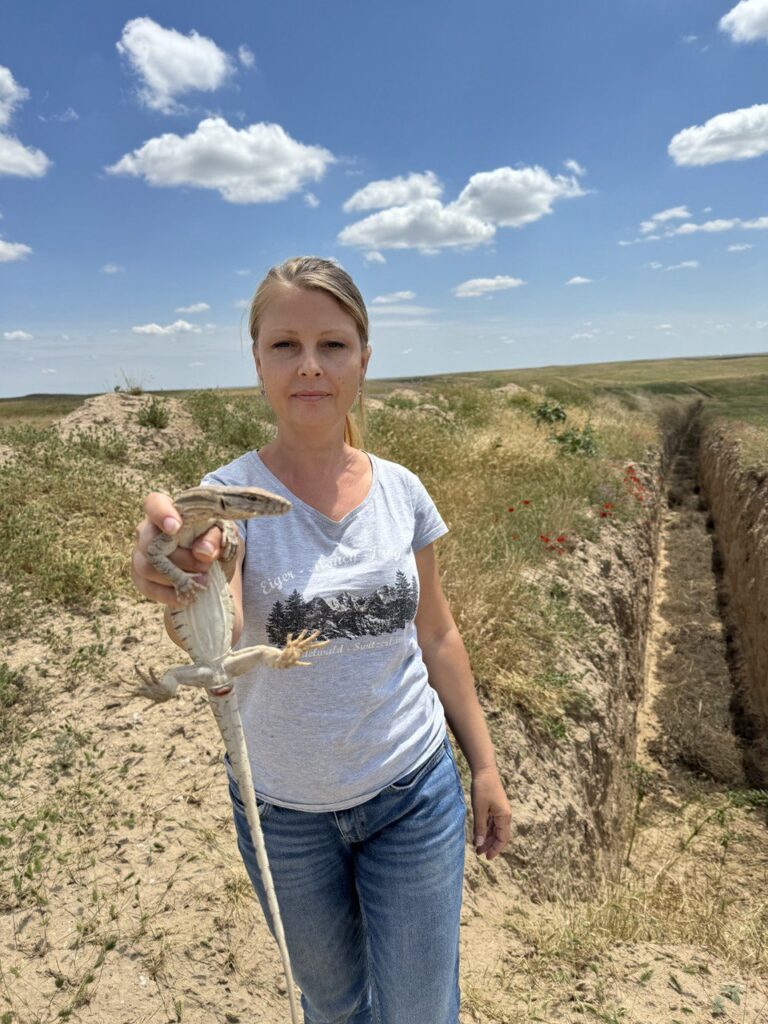The problem of mass deaths of animals in trenches on the territory of Turkestan region is still topical, but there is some good news...
В преддверии Всемирного дня черепахи — 23 мая — наши друзья и коллеги из Фонда защиты природы Tasbaqa вернулись из экспедиции по Туркестанской области.
From 10 to 18 May 2024, the Tasbaqa Nature Protection Foundation with the support of the British Global Greengrants Fund organized an expedition to the Turkestan region in the framework of the project "Attention, Turtle!" aimed at creating conditions for the conservation and restoration of the range and number of the Central Asian turtle in Kazakhstan by minimizing the negative impact of a number of major anthropogenic limiting factors.
The Central Asian Еurtle (Testudo horsfieldii) lives in Southern Kazakhstan and in the countries of Central Asia. Its importance in desert biogeocenoses is very high: during the period of activity from March to May, turtles consume a large amount of ephemeral vegetation and themselves serve as food for more than 30 species of predators, including Red Book listed.

Turtles that have fallen into the trench can no longer get back out, and are doomed to a slow death from starvation and dehydration.
In recent decades, the range and abundance of the Central Asian turtle have been declining due to anthropogenic impact. The species is included in the IUCN Red List in the "Vulnerable" category; in Annex II of the Convention on International Trade in Species of Wild Flora and Fauna (CITES); in the Red Books of Kyrgyzstan, Tajikistan and Uzbekistan. In Kazakhstan, the Central Asian Turtle is not yet classified as a specially protected species, but its number has significantly decreased and is not recovering in many parts of its range due to human exposure.
The purpose of the expedition was to assess the current situation and obtain objective data on the illegal use of trenches to fence agricultural land, which leads to mass deaths of wild animals and livestock, rescue turtles and other animals from trenches, as well as direct contacts with government officials to solve this problem.
During the work in the Turkestan region, it was found that the length of permanent trenches up to 2 meters deep, illegally equipped to fence and protect fields from cattle slaughter by some farmers, is still large and is estimated at hundreds of kilometers – more accurate data will be obtained after processing the results of the expedition.
The good news is that thanks to the joint work of specialists, local authorities and the media in previous years, some of the trenches were eliminated, but this did not happen everywhere. For example, it was found out that none of the trenches in the Baydibek district had been filled in, and some of them had already been updated this year.
During the expedition, we rescued more than a hundred animals from the trenches that became a death trap. Among the rescued, in addition to turtles, Tartar Sand Boas (Eryx tataricus) and Rapid Racerunners (Eremias velox), there were about a dozen large legless lizards - European Glass Lizard (Pseudopus apodus) and one young Desert Monitor (Varanus griseus) – the last two species are listed in the Red Book of the Republic of Kazakhstan. In addition, one sheep was rescued from the trap.
It is indicative that the number of animals we found in the trenches has decreased dramatically compared to previous years. For example, while 272 reptiles were found in one of the trenches at a 7 kilometer stretch in 2021, this year only 78 reptiles were found. A similar picture is observed in other trenches, which objectively confirms a significant reduction in the populations of a number of animal species due to their annual mass mortality caused by human error.
The preliminary results of the expedition were announced by us to representatives of the regional akimat during the meeting. The readiness for further cooperation in solving this problem was confirmed. In addition, the participants of the expedition gave an interview to a journalist of the regional television: https://www.youtube.com/watch?v=kEEvxjl8Bs0
According to preliminary data, the problem of illegal use of trenches for fencing farmland and the associated mass death of animals exists in addition to the Turkestan region and in some other regions of Kazakhstan. Therefore, it is obvious that in order to comprehensively solve this problem, it is necessary to amend the current regulatory framework of the Republic of Kazakhstan, including an outright ban on the use of permanent trenches for fencing agricultural land. The preparation of these recommendations and their transfer to the Government of the Republic of Kazakhstan is also one of the main tasks of the project "Attention, turtle!".
Ghani Nazarbekov hands over the turtles rescued from the trench to his colleagues.
Крупные безногие ящерицы — желтопузики тоже часто становятся жертвами траншей.
The release of European Glass Lizards to freedom away from the trenches.
Additional information about the results of the research and further plans can be obtained by contacting the specified contacts:
Coordinator of the project "Attention, turtle!" Julia Tsaugg +7 701 443 42 15
Ghani Nazarbek +7 707 415 48 43
Vladimir Terentyev +7 771 297 72 69



